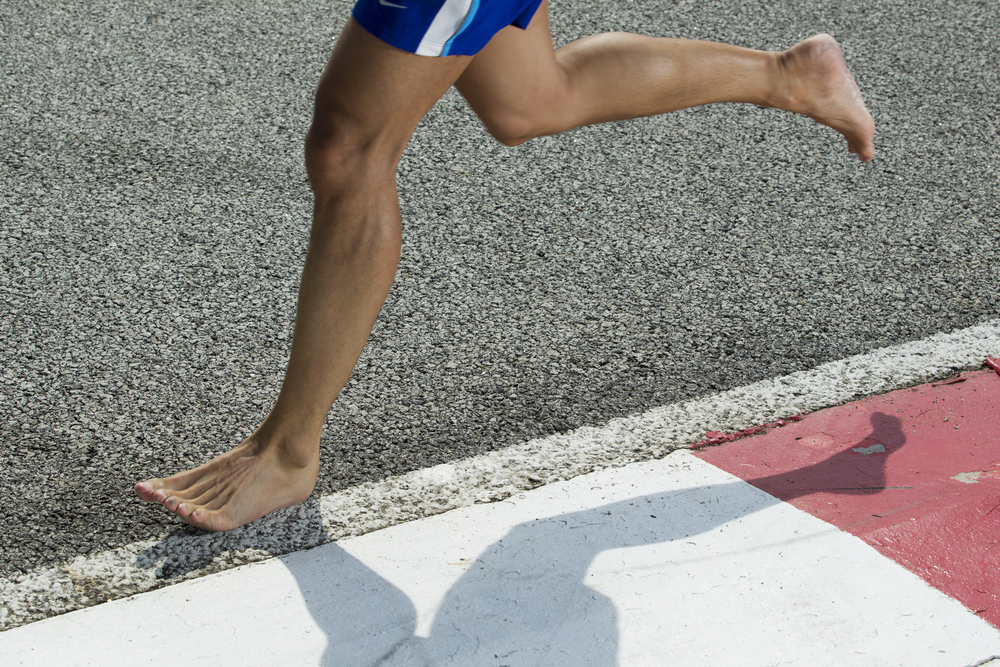Anterior compartment syndrome in runners is often caused by several factors related to greater physical activity, training errors and anatomical characteristics. Many runners experience this condition when they participate in high intensity training without allowing their bodies to recover enough time. According to Vajopey and Miller (2017), this lack of recovery can lead to greater pressure within the muscle compartments of the leg. When this pressure increases, it can reduce blood flow and supply of oxygen to the muscles, causing significant discomfort and pain.
The symptoms of the anterior compartment syndrome appear commonly during the race or other forms of exercise. Runners can notice pain, swelling and a tight feeling at the front of their legs. These symptoms generally decrease when the individual stops exercising, which is a key characteristic of the condition (Nwakibu et al., 2020). If a corridor continues to overcome pain, symptoms can get worse, which leads to more serious complications.
A study by Roman et al. (2021) shed light on how common this syndrome is in runners. The study emphasizes that athletes and coaches must recognize signs and symptoms at the beginning to allow rapid and handling intervention. Understanding the signs of the condition can help prevent more injuries and allow athletes to recover more effectively.
The biomechanical factors and the way in which a runner runs can also play a role in the appearance of the anterior compartment syndrome. For example, running with an incorrect posture can create additional stress in the muscles at the bottom of the leg (Mulvey, 2024). This incorrect running technique can lead to greater risks of developing the condition, particularly those that are new to running or have made sudden changes in their training routine.
Footwear can also affect the development of the anterior compartment syndrome. Wearing shoes that do not provide proper support or that do not adapt to the specific type of footing of an individual can exacerbate symptoms. When runners choose incorrect shoes, they may not have adequate cushioning or stability, which can contribute to discomfort and increase the probability of injuries, including the anterior compartment syndrome.
In general, the probability of developing the anterior compartment syndrome in the runners is linked to several factors. The greater training intensity without adequate recovery, high -impact running techniques and inappropriate footwear contribute to the risk of this condition. When focusing on these causes, athletes can work towards prevention and maintain better levels of performance while reducing the possibilities of injury., Diagnostic methods for anterior compartment syndrome in runners are mainly focused on clinical assessments and physical exams. It is crucial to identify symptoms such as pain, swelling and waterproofing in the bottom of the leg that occurs during activity but can calm with rest. Symptoms are often evaluated with patient’s racing history and training habits. According to Livingston et al. (2018), an in -depth clinical assessment is essential because it helps health professionals to determine if other tests are necessary.
A common method to confirm the anterior compartment syndrome is to measure the pressure of the compartment. This test is to insert a needle connected to a pressure monitor in the affected compartment. High pressure readings, especially during activity, indicate the presence of syndrome. If the pressure levels exceed normal beaches, it supports the diagnosis of the anterior compartment syndrome (Buerba et al., 2019). However, it is essential to note that even if the pressure measurements are useful, they may not always provide a clear diagnosis by themselves, especially in the event of intermittent symptoms.
Imaging techniques, such as MRI, can help view the surrounding muscle and tissue. Although these analyzes do not confirm compartment syndrome, they can reveal muscle damage, anomalies or other reasons for pain, which could help exclude other conditions (Buerba et al., 2019). However, MRI is not systematically used to diagnose previous compartment syndrome due to its pressure problems detecting.
With regard to the management of anterior compartment syndrome, processing options range from conservative interventions to surgical interventions. Conservative treatments often focus on modifying training charges and the integration of physiotherapy. Techniques such as retraining of the running technique to correct the form of race, potentially reducing the risk of muscle overculy and compartment (Thein et al., 2019). Physiotherapy can include specific exercises to strengthen leg muscles and improve flexibility, promoting better blood flow and reducing symptoms.
If conservative methods do not lead to improvement, surgical options can be explored. These generally imply a fasciotomy, a procedure where the fascia surrounding the compartment is cut to relieve the pressure (Collins and Gilden, 2016). Studies have shown that many runners are experiencing significant improvements in their functional results after undergoing surgery. For example, Salzler et al. (2020) noted that a high percentage of athletes reporting a decrease in pain and improving performance after surgery. Campano et al. (2016) conducted an investigation which echoes these results, which suggests that if surgery can be considered a last appeal, it can be very effective in the treatment of chronic cases of anterior compartment syndrome.
In addition to these treatment strategies, injury prevention remains a vital aspect of runners management. Appropriate warm -up exercises, a gradual increase in training intensity and attention to racing techniques can help reduce the risk of developing a compartment syndrome. Educational programs for corporal mechanics can also be beneficial, because increased awareness of the state and its symptoms can lead to rapid treatment, positively affecting long -term sports performance., Preventing the anterior compartment syndrome is very important for runners. Different effective strategies can help reduce the risk of this painful condition. First of all, the runners should gradually increase the intensity and mileage. This means not suddenly running much further or faster than they are used to. Slow and constant progress helps their muscles and fabrics to adapt without being excessively stressed (Buerba et al., 2019).
Secondly, the recovery time is crucial. Athletes should allow their bodies to rest and recover after intense training. This may involve the taking of days or the incorporation of the lightest training days in their programs. In this way, the runners give their muscles the time to heal and adapt, which can prevent injuries, including the syndrome of the front compartment (Buerba et al., 2019).
Footwear are another key factor. Wearing the right shoes can help support the foot and ankle, reducing the tension on the front compartment of the leg. Runs can benefit from consultancy with specialists who can analyze their pace and recommend footwear or personalized orthoses, if necessary (Buerba et al., 2019). This guarantees that the shoes provide adequate cushioning and support, which is vital to prevent injuries.
It is also essential for the runners listen to their bodies. If they begin to feel pain or discomfort in the front of the legs, they should not ignore these first warning signs. Looking for advice from coaches, trainers or medical professionals can help to face any potential problems before worsening (Nwakibu et al., 2020). Early intervention is essential for the management of symptoms and often can lead to better results.
The impact of the anterior compartment syndrome on athletic performance can be considerable. The runners can discover that their racing mechanics change due to pain or muscle seal, and this can involve a decline in their overall performance (Vajapey and Miller, 2017). If they continue to run despite suffering, they can alter their style of running in ways that are not efficient or healthy. Over time, this can lead to injuries to compensation in other areas of the body, further influencing their ability to run well.
In addition, if not treated, the front compartment syndrome can lead to a condition known as chronic exertional compartment syndrome. This condition could involve long -term problems for athletes and may require more invasive treatments, such as surgery (Roman et al., 2021). Therefore, addressing the problem in advance and the implementation of effective prevention strategies is essential to maintain athletic performance and health.
In summary, the prevention of the anterior compartment syndrome involves intelligent training practices, adequate recovery, adequate footwear choices and being vigilant of body signals. By adopting these steps, runners can improve their training, improve their performance and reduce the chances of developing this painful condition.
Citations:
Vajapey, S. and Miller, T.L., 2017. Evaluation, diagnosis, and treatment of chronic exertional compartment syndrome: a review of current literature. The Physician and sportsmedicine, 45(4), pp.391-398. https://www.tandfonline.com/doi/abs/10.1080/00913847.2017.1384289
Thein, R., Tilbor, I., Rom, E., Herman, A., Haviv, B., Burstein, G. and Tenenbaum, S., 2019. Return to sports after chronic anterior exertional compartment syndrome of the leg: conservative treatment versus surgery. Journal of Orthopaedic Surgery, 27(2), p.2309499019835651. https://journals.sagepub.com/doi/abs/10.1177/2309499019835651
Salzler, M., Maguire, K., Heyworth, B.E., Nasreddine, A.Y., Micheli, L.J. and Kocher, M.S., 2020. Outcomes of surgically treated chronic exertional compartment syndrome in runners. Sports Health, 12(3), pp.304-309. https://journals.sagepub.com/doi/abs/10.1177/1941738120907897
Buerba, R.A., Fretes, N.F., Devana, S.K. and Beck, J.J., 2019. Chronic exertional compartment syndrome: current management strategies. Open access journal of sports medicine, pp.71-79. https://www.tandfonline.com/doi/abs/10.2147/OAJSM.S168368
Livingston, K.S., Meehan III, W.P., Hresko, M.T., Matheney, T.H. and Shore, B.J., 2018. Acute exertional compartment syndrome in young athletes: a descriptive case series and review of the literature. Pediatric Emergency Care, 34(2), pp.76-80. https://journals.lww.com/pec-online/FullText/2018/02000/Acute_Exertional_Compartment_Syndrome_in_Young.2.aspx
Roman, G., Anja, H., Thorsten, G., Phil, T., Andrej, I. and Christoph, T., 2021. Chronic Exertional Compartment Syndrome in Athletes: A narrative Review. Sport Exerc. Med. Switz. J, 69(10.34045). https://sems-journal.ch/8207
Nwakibu, U., Schwarzman, G., Zimmermann, W.O. and Hutchinson, M.R., 2020. Chronic exertional compartment syndrome of the leg management is changing: where are we and where are we going?. Current sports medicine reports, 19(10), pp.438-444. https://journals.lww.com/acsm-csmr/fulltext/2020/10000/chronic_exertional_compartment_syndrome_of_the_leg.12.aspx/1000
Mulvey, M., 2024. Exertional Compartment Syndrome and the Development of Preventative Measures. https://www.preprints.org/manuscript/202403.0357/download/final_file
Collins, C.K. and Gilden, B., 2016. A non-operative approach to the management of chronic exertional compartment syndrome in a triathlete: a case report. International Journal of Sports Physical Therapy, 11(7), p.1160. https://pmc.ncbi.nlm.nih.gov/articles/PMC5159639/
Campano, D., Robaina, J.A., Kusnezov, N., Dunn, J.C. and Waterman, B.R., 2016. Surgical management for chronic exertional compartment syndrome of the leg: a systematic review of the literature. Arthroscopy: The Journal of Arthroscopic & Related Surgery, 32(7), pp.1478-1486. https://www.sciencedirect.com/science/article/pii/S0749806316001237
University lecturer, runner, cynic, researcher, skeptic, forum admin, woo basher, clinician, rabble-rouser, blogger, dad.



